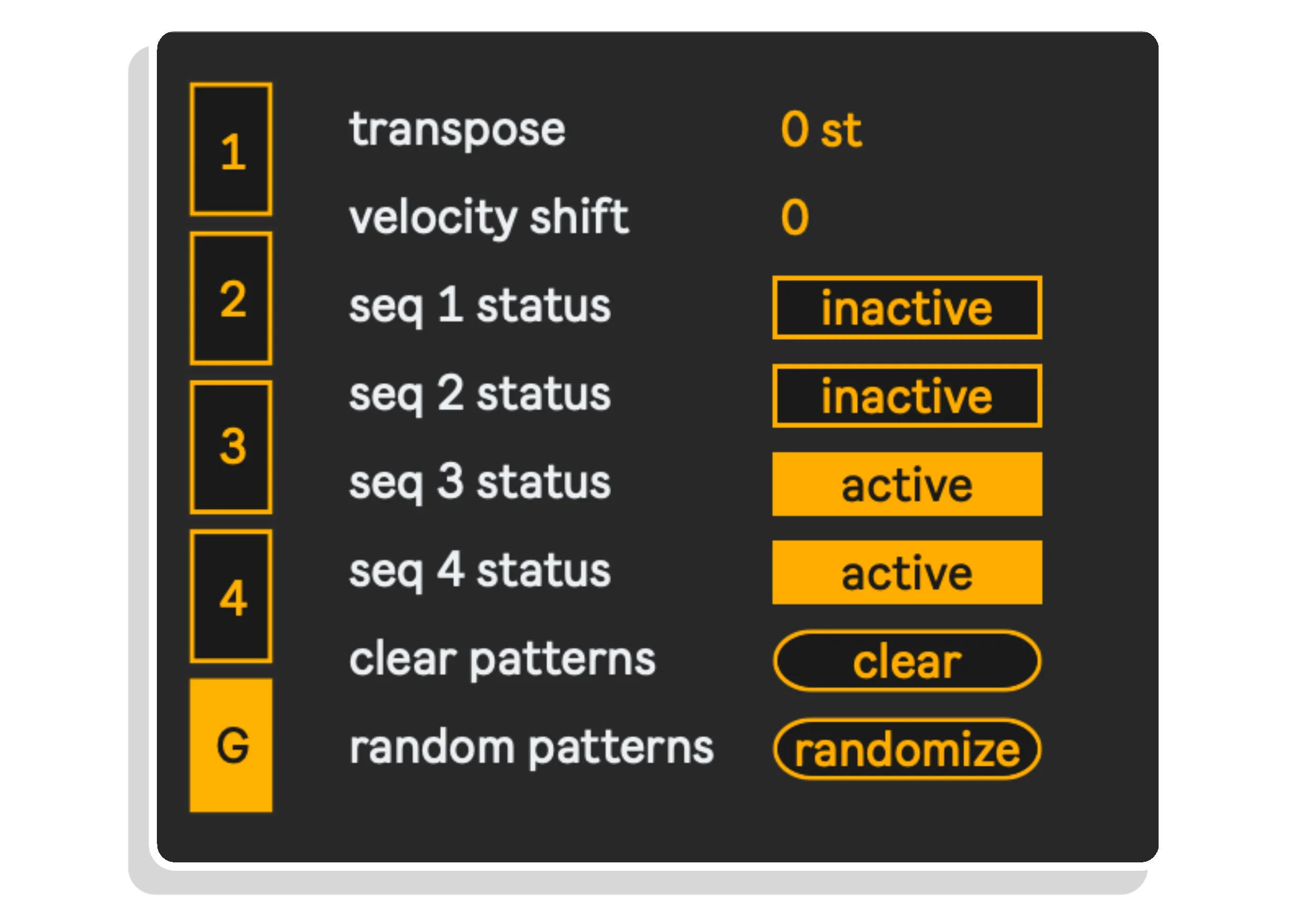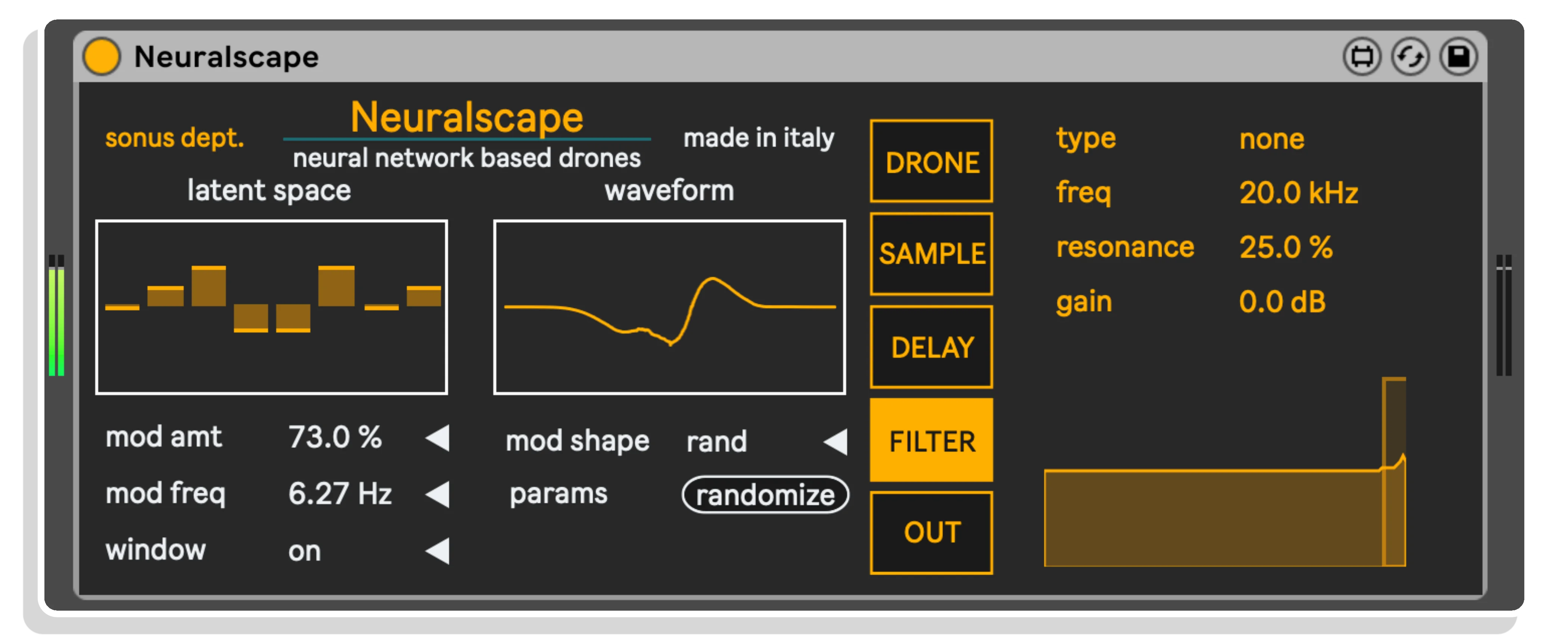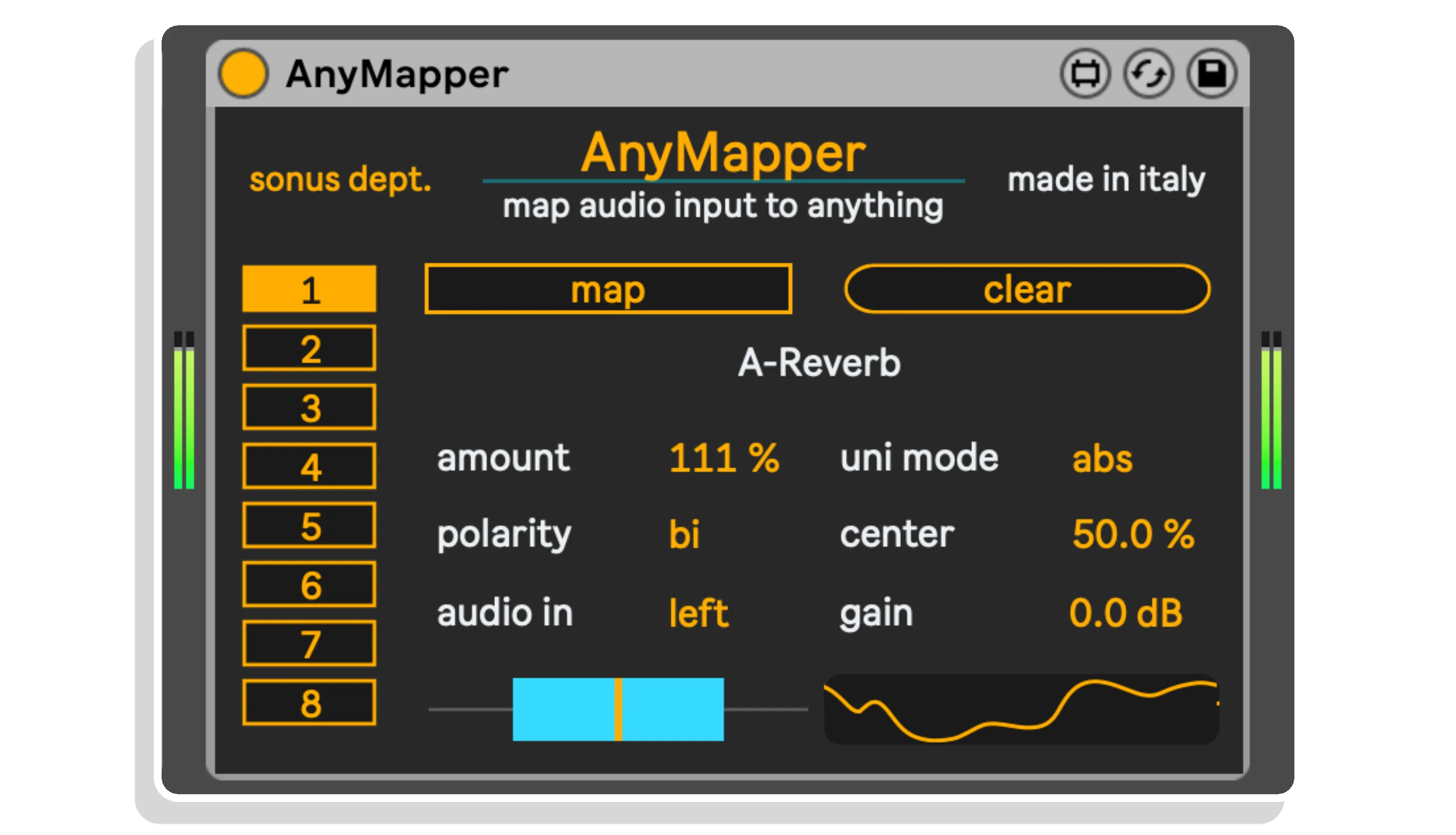NeuraLFO uses the neural oscillator to modulate up to eight different parameters, that can belong to any Ableton Live device or track. Mapping a control to a slot of NeuraLFO is as easy as clicking on the map button and then clicking on the control you want to modulate.
The first part of the device, that you will also encounter, with some variations, in the following modules, allows you to modulate the waveform and the resulting signal, so that it can evolve over time. A diverse and complex signal that becomes, if you want, even more complex and articulated: is there something more effective for modulations that are anything butdull?
The visual feedback lets you immediately see how the waveform and the resulting signal are changing.

The first part lets you choose how to build, modulate and transform the neural signal. Some explanations for the more unusual terms: adjust to can sync the frequency of the wave to a time division (e.g. 1/16), in the modulation shape “rand sine” is a herd of sines whose phase is modulated by random signals, sinefold is a Chebyshev distortion, and smoothing is a lowpass filter that make the signal less jagged
The visualization section lets you manually change the eight parameters of the latent space and see how this and the modulations of the first section affect the resulting waveform and the output signal, that will be used to modulate the chosen parameters.
The last part is more self-explanatory. Click on map and then on the parameter you want to modulate to control it by the LFO. The polarity of the signal can be bipolar or unipolar (and in this case positive or negative). The unipolar mode lets you choose how to transform the signal into an unipolar one: “abs” does it by calculating the absolute value of the signal, “offset” by mapping [-1, 1] interval to [0, 1], so when the signal is 0 the LFO is at 50% of its peak.
Neuralscore is a MIDI sequencer that uses the position of the neural oscillator at a given time step to determine which note to play, chosen among the ones of the scale you set. In the updated version of Neuraloot, Neuralscore+ has been added, featuring three neural waves, the first that still controls the pitch, the second controlling the actual chance of a note to be played and the third controlling the velocity of the note.
This device features four different sequencer lanes, and each one can have a different scale, extension, note velocity, root note, note length, bar length and number of steps. Regarding the steps, they can range from 2 to 32, but they will be always subdivisions of the number of bars (1 to 8) you chose. This different take on step sequencing allows you to use weird and unusual meters, but that will be always in sync with your song.
Another feature is the possibility to define your own scale, specifying the distance in semitones from the root for each grade. This is not only cool for melodies, but also to control drum machines the way you want.

The second part features four sequencer lanes, each one with a number of steps that ranges from 2 to 32, and that can be spread in up to eight bars.
Then you have handy switches to turn on and off the four lanes, a button to clear all patterns at once and another one to randomize the patterns.

The first section has the controls to edit the parameters of the three neural waves: P controls the pitch, C the chance of the note to be played, V the velocity. Chance threshold and velocity range can be set in the G tab of the second section

The G (read global) part of the second section allows to specify some global settings: transpose and velocity shift, i.e. a number (which can also be negative) to sum or subtract to all notes’ velocities.
Then you have switches to turn on and off the four lanes, setters for chance threshold, sliders for velocity ranges and buttons to clear or randomize patterns and parameters.
The parameters are pretty self-explanatory. The custom scale allows to specify your own scale, by selecting the interval in semitones of each grade from the root. Remember to choose “custom” from scale list to use your custom scale.
Neuralscape is a drone generator. If you already know Sonus Dept.’s Max for Live bundles, you know that we like to include these compact devices to create bizarre and evolving textures, that are ready to be sent to a reverb or other nice creative effects to obtain dense synthetic soundscapes. Neuralscape uses the neural oscillator output to do different things: it controls the frequencies of a 100 oscillator bank, the playback rate of a sample and some parameters of the effects. This way, you can have jagged and ever changing textures, that you can leave it as it is or you can further treat with some effects. We recommend a convolution reverb, a distortion or, even better, the device Babel, included in our M4L bundle Æthernity!

The second generator is a sample player, with the playing rate controlled by the shape of the neural wave. You can load a sample with the dedicated button or by dragging it directly in the bottom part of the tab. With the reverse option you can choose when the sample should play backwards: only when values of the wave are negative, never or always.
The remaining tabs feature a stereo delay, with its delay times that can be modulated by a LFO, a filter and an output control, with a bonus ring modulator!
Neuraloscillator and NeuraloscillatorM are two (not only) utility modules, that generate the neural wave and output it as audio. This way, it can be further modified by any effect you like and then be used as modulator signal feeding the manipulated output to another utility module of this package, AnyMapper.
But this is only a part of the story! These modules have extended frequency range for the oscillator, so that it can be used as a (not so) classic sound signal. Try it with some reverberation, a glitch effect or anything else that comes to your mind: the neural oscillator can be the starting point of a whole world of timbres!
Is that all? No, because while Neuraloscillator acts as audio device, NeuraloscillatorM is an instrument device where the frequency of the neural oscillator can be controlled by MIDI notes, and it also has an optional basic envelope that turns this device in a minimal yet complete monophonic synthesizer. The first step for a complete neural synthesizer?

The two siblings one above the other. As explained before, Neuraloscillator is an effect device while NeuraloscillatorM is an instrument device. Other differences are the frequency range (up to 880 Hz for the former, up to 20 kHz for the latter) and the optional AR envelope in NeuraloscillatorM. When the envelope is turned off, the generation is continuous but its frequency can still be changed either manually or by sending a MIDI note (in addition, of course, to automating the parameter).

AnyMapper is another utility module that uses its audio input as modulation source for up to eight different parameters. Basically, it is the second part of NeuraLFO, and not only it allows manipulated signal from Neuraloscillator to be used as modulator, but it can use any audio signal to control any automatable parameter within Live.
The device is similar to the second half of NeuraLFO. Here you can also select which audio channel to use, with ring modulation between channels and mono mixing as additional options.
Moreover, for each slot you can adjust the gain of the incoming signal.

For support as an existing customer please use the Support Request section within your account page, this will enable us to validate your purchase automatically and assign the request to the relevant developer to respond when they're available.
Reviews
There are no reviews yet.